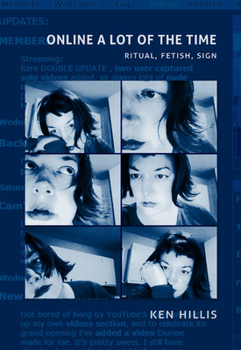Online a Lot of the Time: Ritual, Fetish, Sign
Select Format
Select Condition 
Book Overview
Hillis analyzes forms of ritual and fetishism made possible through second-generation virtual environments such as Second Life and the popular practice of using webcams to "lifecast" one's life online twenty-four hours a day, seven days a week. Discussing how people create and identify with their electronic avatars, he shows how the customs of virtual-world chat reinforce modern consumer-based subjectivities, allowing individuals to both identify with and distance themselves from their characters. His consideration of web-cam cultures links the ritual of exposing one's life online to a politics of visibility. Hillis argues that these new "rituals of transmission" are compelling because they provide a seemingly material trace of the actual person on the other side of the interface.





